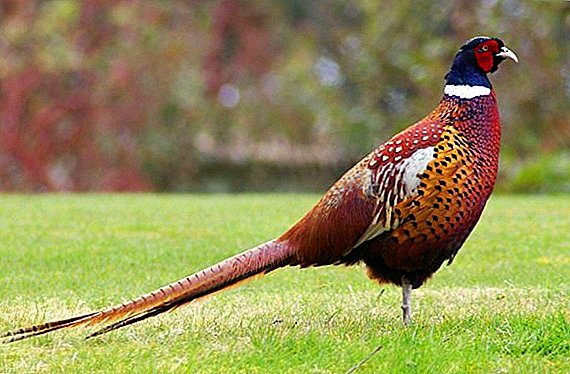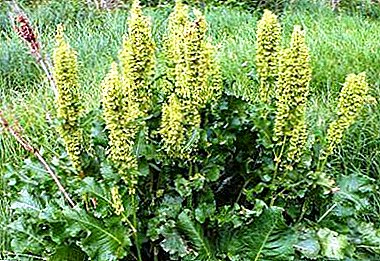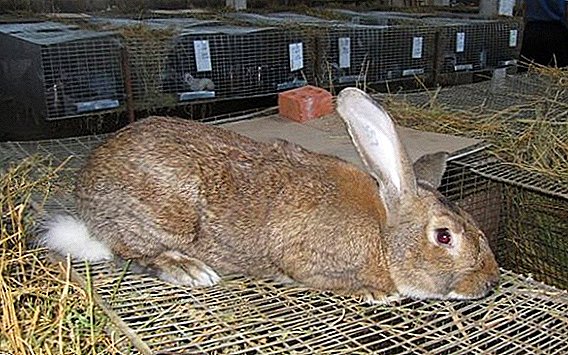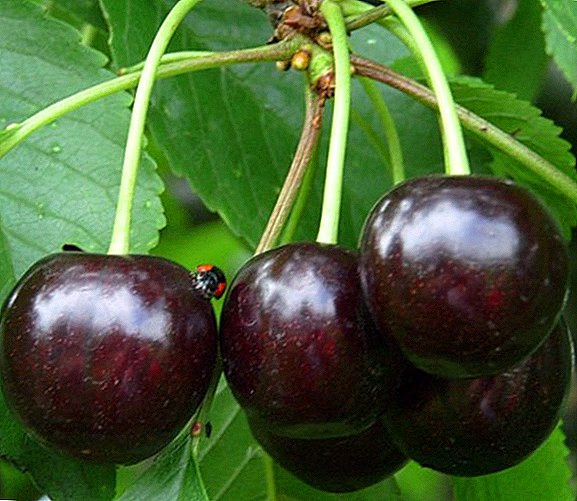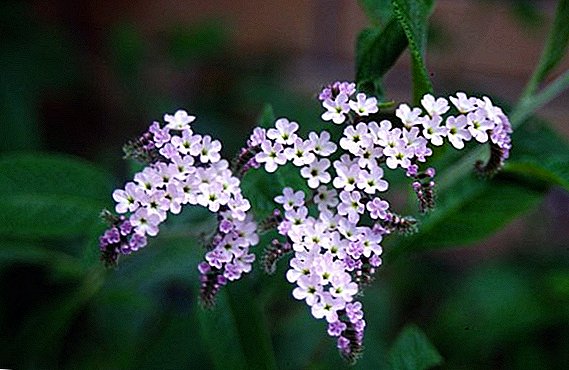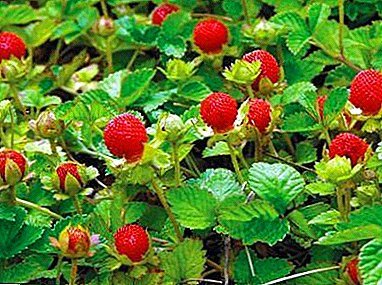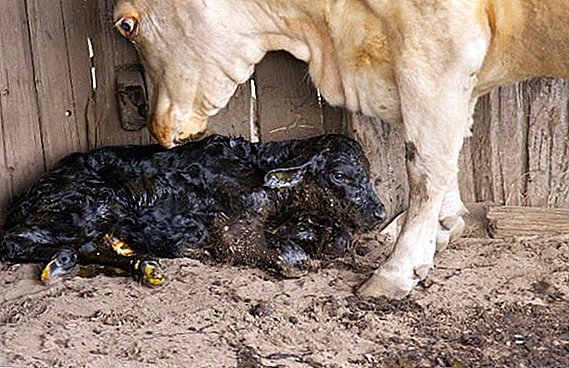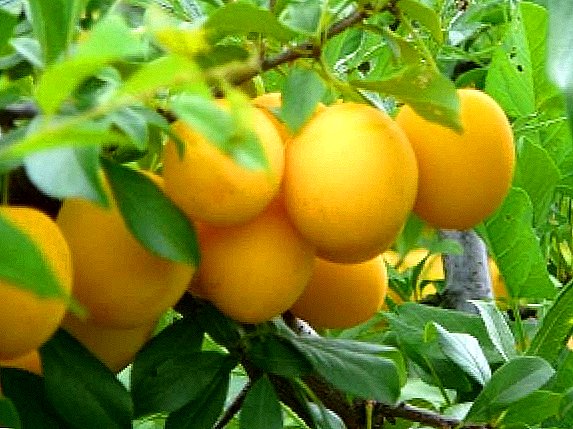
In our standard perception, the plum should always be blue or purple.
If it comes to yellow plums, then for some reason everyone immediately thinks of plum.
In fact, there are many varieties of yellow plums, which differ from cherry plum not only in taste, but also in their size.
About varieties of yellow plums and will be discussed in this article.
What are the yellow plums?
The varieties of yellow plums differ little from others - they are just as useful, among them you can find both large and small, sweet and sour.
In general - you can choose a variety for every taste, shape and even color. Combines all varieties of yellow plums - their universal purpose. Their fruits can be used both directly in fresh form, and for any kind of canning - jams, preserves, compotes.
Variety of plums "Altai Anniversary"

The most zoned variety of all yellow plums. It can be found both in the West and the East of Siberia, and in the Ural region. Distributed variety in the territory of Northern Kazakhstan.
The Altai Yubileinaya received all its best qualities from the Manchurian Prunes, from which this variety was bred. The second donor of the “Altai Jubilee” is considered to be the Immune Plum.
Fruits are small, have an angular-round shape. Their average weight is 15 grams. They are distinguished from others by their yellow-orange color, which is covered with a cute “blush” of bright red color. Also, the peel is covered with a waxy coating which has a whitish tint. The skin itself is thin, does not affect the basic taste of the fruit.
The flesh of the "Altai Jubilee" is colored yellow-orange. According to its structure, it is very loose and juicy, which makes it very soft when eaten. Fruit taste is goodsweet and sour with a characteristic pleasant aroma. The large bone of the fruit is very easily separated from the pulp. The content of ascorbic acid is 7 mg per 100 grams.
This variety is considered early in maturity. The removable ripeness of the fruits occurs approximately in the middle or second half of August.

The tree has practically no distinctive features. In growth, it reaches a medium size. The crown has a round-reverse pyramidal shape. The number of crown branches is not large, which provides the tree with a medium thickening.
The main fruitful organ of a tree of this variety are the bouquet branches. The branches are of skeletal type, straight branches depart from them at an acute angle. The main color of the bark is brown-gray. The tree is characterized by low shtamb.
The tree of this variety is famous high yield. In the period of fruiting the tree does not enter very quickly - approximately at the age of 3-4 years from the moment of planting.
A good advantage of the Altai Jubilee plum variety is its high yield and excellent fruit flavor. In addition, the yellow color of plums gives them a special appeal and appetizing. Good resistant to winter frosts and spring frosts.
There are enough disadvantages of this variety, but an experienced gardener can easily cope with all of them. First of all it unsuitable for transportation fresh, which, however, does not interfere with the processing of plums and transport in the form of jam or compote over long distances.
Also, the variety has low resistance to various diseases characteristic of plums. Special often affected by chlorosis. Very often, large damages are given to the Altai Jubilee plum seed. The variety is afraid of droughts and is not able to self-pollinate.
Variety plum "Honey" ("White Honey")

Extraordinary tasty variety yellow plums, which very much resembles the real honey. Variety of Ukrainian origin. The zoning is wide, up to the northern regions, which is facilitated by the unpretentiousness of the variety.
The fruits of this variety are considered large, their weight begins from 30 grams and can even reach all 50. By the way, the fruits may not be completely one-dimensional. But the shape of the fruit is correct, rounded. The color of the skin is yellow. There is also a thin wax bloom whitish.
The density of the skin is high, which gives the fruit a high transport capacity.
The flesh is distinguished not only by its rich yellow color, but also by its juiciness. The structure of the fruit is dense, which complicates the process of separation of the bone from the pulp. We have already mentioned the taste, it is very sweet in the fruits of the Plum "Honey", but without cloying, which negates a slight tinge of sour notes. Tasting assessment of the fruits of this variety - 4.5.

This variety is considered one of the earliest among all varieties of plums. The removable maturity comes already in the last days of July and the first days of August. This advantage is also provided due to the early start of flowering of the Honey variety.
The variety is self-productive, for which reason it needs dusting by other varieties. As the pollinators most often used "Hungarian Early" and "Renklod Karbysheva."
The “Honey” plum tree is very large in size and with conditions favorable for growth it can reach 5 meters. The crown of the tree is rounded, with a small number of main branches. This contributes to the fact that the tree is not too thick and the fruits have the ability to ripen quickly and efficiently.
Variety is considered high-yieldingthat is partially provided by the large size of its fruits.
Variety has high frost resistance and easily tolerates even the most frosty winters. Plum does not need any special care, it takes root very well in any climatic conditions. The purpose of the fruit is universal, which makes them even more popular for home gardening.
Tall the tree takes up a lot of space in the garden, for the reason that many gardeners refuse to grow it. According to some. In its place you can plant two high-yielding trees and get much larger yields, others are inclined to think that for the taste of these plums you can sacrifice two extra meters of the garden. The choice is yours.
It is also interesting to read about the varieties of plums for the Moscow region
Variety plum "Golden Large"

Another beautiful yellow plum variety with excellent large fruits. It was bred as a result of the selection of seedlings of cultivated varieties zoned in the southern region of Russia. The variety Golden Large itself is mostly zoned in the Lower Volga region.
The average mass of the plum fruit "Golden Large" fully meets the name and is about 43 grams. The color of the main color of these fruits is yellow. Cover color is represented by pink-yellowish spots. The skin is not dense and delicate, poryta wax wax, easily removed from the fetus.
The fruits are oval-shaped, with small depressions near the funnel and tops, one-dimensional. The abdominal suture is practically invisible on the fetus.
The color of the pulp is yellow. According to the structure, it is very soft and tender, contains a large amount of juice, which makes its sweet-sour taste especially pleasant and melting. Tasters taste is estimated at 4.8 points out of 5. The variety is one of the leaders in the content of ascorbic acid in 100 grams of pulp, which is equal to 18.5 mg.
The tree comes into bloom in mid-May, approximately 15-19 numbers. Therefore, Golden Large is a late-ripening variety, the fruits of which reach an optimal state for eating only in the first days of October.

The middle-growth tree of this variety is characterized by a pyramidal crown with spreading branches. It should be noted that the number of branches in this tree is not large and they do not thicken the crown. Also, it is characterized by the average foliage. Color shoots brown. Bouquet branches are the main fructifying organ of the Golden Large tree.
The first fruiting observed only 4 years after planting a tree. The yield of the variety is quite high. and, most importantly, regular. The average number of fruits that are harvested from one tree is 26.8 kilograms. From one hectare of industrial garden about 126-146 centners of ripened fruits are collected annually.
The advantages of this variety are many. First of all, it is the regularity of fruiting and the good taste of large fruits. It is also worth noting an attractive appearance, estimated at 4.5 points. Wood is very resistant to low temperatures..
Moreover, even when the tree blooms, spring frosts are not terrible. The variety is resistant to long periods of drought. Rarely affected by pests and diseases. One of the few varieties of yellow plums, which is able to be stored for a long time subject to the necessary conditions - up to 1.5 months.
In addition, during storage, the appearance of the fruit becomes even more attractive, the taste qualities acquire additional positive qualities. The variety is cultivated both in home plots and in industrial gardens.
Young wood of this grade frost prone, and a very long time can move away from damage. Sometimes freezing can completely destroy the tree.
Go to the care of the yellow plum
Plum does not require much attention from the gardener. However, if it grows in not quite suitable conditions, care should be regular and take into account all the necessary requirements. In addition, it is worth paying attention to the fact that varieties of this type bred by the selection method are practically incapable of dusting themselves.
Therefore, without special efforts, it is easy to be left without a crop at all.
Let's start with trimming

Plum crown practically does not need to be formed, only in the very first year you need to cut its sparse-tier scheme. It is understood that the branches should be left in several tiers, each of which should not be more than 6 skeletal branches. The distance between the tiers should be about 30-40 centimeters.
At the tree of 2-3 years of age useful to trim young gains about 30 centimeters. However, if in general the growth of each branch is the same, you do not need to level anything. Strong and frequent pruning plum you can delay the period of its first fruiting.
On old plums, only dry and damaged branches are cut. After pruning, they must be burned to prevent the spread of disease. When the fruit is irregular, the main branches are sometimes pruned.
Fertilizer is a very important stage of care.
It is recommended that the soil around the plum be loosened regularly, removing the root growth, and mineral and organic fertilizers be introduced into it. This should not be done often, because the drain is not very fastidious to fertilizers. Mineral fertilizers are applied no more than once every 2-3 years.
In the spring, it is necessary to fertilize the soil with nitrogen, and in the autumn it is recommended to use phosphorus and potassium. Humus is introduced even less often - once every 3-4 years. Its amount per 1 m2 should be no more than 12 kilograms.
Little about watering

Plum is very demanding on moisture, especially at a young age. In dry years, it should be watered regularly throughout the summer, twice a month. At the same time, one adult tree should leave up to 10 buckets of water, for a young one, 4-6 buckets will be enough.
It is also necessary to water the plum in September, because if it runs out before the start of winter frosts, the winter will be twice as difficult to survive. It is recommended to mulch the soil after watering in order to keep moisture in it longer.
We protect from pests
The tree is protected from fungal diseases by cutting and burning diseased fruits, leaves and twigs. Also, in the implementation of pruning, especially autumn, it is very important handle cut points using garden grease. Also, instead of it, they often use lime milk with copper sulfate (1-2%) diluted in it.
In order to protect the tree from damage by klosterosporosis, in the fall the tree is sprayed with urea.
As long as the air temperature has not reached the indicator of the thermometer above 10 degrees, it is recommended to shake off and destroy such a plum pest as sawfly. About 6 sprays with a period of 7-10 days should be carried out in order to get rid of the plum moth. For spraying, it is recommended to use drugs such as "Biotoxibacillin" or "Gaupsin".
What you need to know about winter care for yellow plums
For winter it is recommended to tie the branches of a young tree in one broom to protect them from frost and winds. The barrel itself is tied to a peg. Young seedlings are generally recommended to be dropped in snow. The branches of an adult fruit-bearing tree need to be supported with colas, since a large amount of snow can break them off.
The trunk of the tree should be covered as much as possible with a layer of snow, which is covered with hay from above.
Plum planting requirements

It is very important that the place you have chosen for landing is well lit and not blown by the winds. After all, without enough light, the fruits will badly tie and ripen, and if during the flowering period the tree is blown by the wind - you risk completely without a crop.
Prepare a pit for sapling
The pit should be dug up prematurely, 2-3 weeks before planting. Its depth should be about 60 centimeters, so that a mixture of humus and topsoil can be covered to the bottom. This mixture should be poured into the pit immediately, so that she can settle before the time of direct landing.
Also, it is recommended to drive a stake into the pit immediately, to which we will then tie up a sapling. The stake should be located on the north side of the tree and at a distance of about 15 centimeters from it.
How to plant?
You need to be very careful not to accidentally bury the root neck of the plum. Optimally, it should be 3-4 centimeters above the soil surface.
Soil that roots fall asleep does not need to be mixed with fertilizers. Also, it is important that there is no air left near the roots, as it can dry them. therefore the soil needs to be tamped well. Also, after planting the tree is plentifully watered. Using from 3 to 6 buckets of water (depending on how dry or wet the soil is).
About the landing time
It is possible to plant plum both in the spring, and in the fall. However, it is preferable to choose autumn time. This is explained by the fact that the autumn planting of a plum is not carried out as late as, for example, an apple tree. Therefore, before the start of frost, it should have time to settle down a bit to the soil in order to tolerate low temperatures well. Otherwise, the tree will simply freeze.



